The Bontrager Ion 200 RT / Flare RT light set is a high-quality, well-performing light set that will help to ensure you’re seen come day or night.
Each light performs well and is fit for purpose. Together, they make a neat set and feature useful connectivity with Garmin head units.
The front light isn’t powerful enough to light your way – you’ll need a more powerful alternative (Trek’s Ion Pro RT is a strong candidate).
However as a light set to draw attention to yourself, it’s difficult to fault and these are among the best bike lights on the market.
Bontrager Ion 200 RT / Flare RT details and specifications
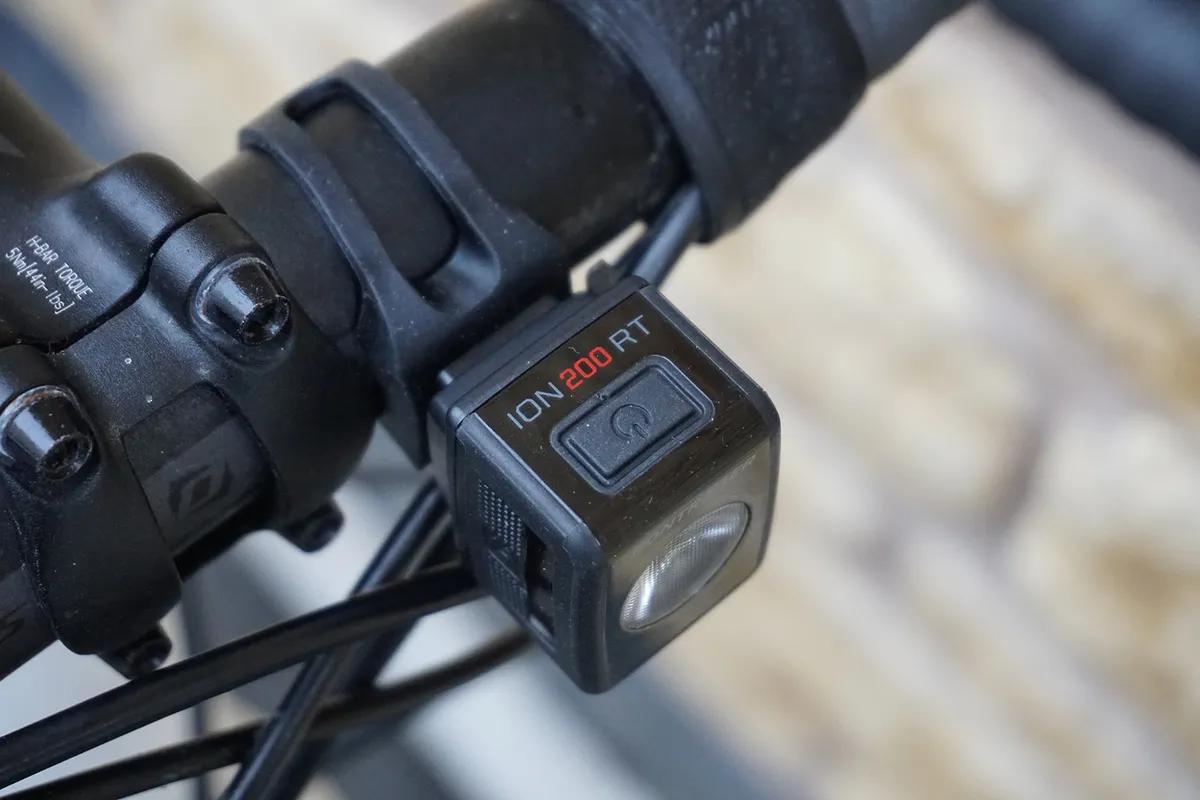
The Bontrager Ion 200 RT front light and Flare RT rear light look very similar. Only the yellow-white and red LEDs visible through the lenses and branding on top separate them.
They take a cuboid shape, and feature a power/function button on top and a micro-USB charge port beneath. One USB-A to micro-USB cable is provided for charging.
The Ion 200 RT front light puts out up to 200 lumens, while the Flare RT rear unit ships 90 lumens.
The lights use COB (chip-on-board) LEDs, covered by textured lensing. No claims are made around this, but I suspect the texture is to help maintain brightness while reducing potential glare.
The front light has three static modes, a disruptive flash and a combination flash (where a static backlight is paired with a flash).
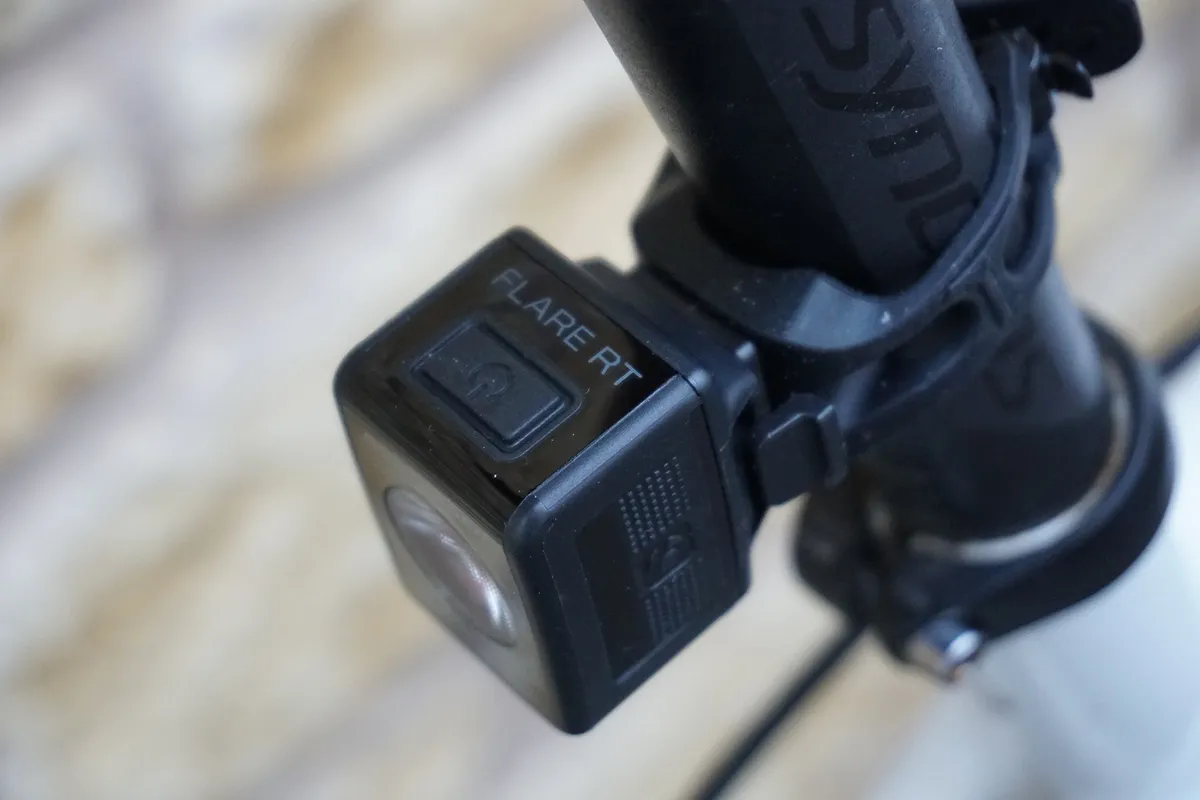
The rear light has two static modes, two disruptive flash modes, and a combination flash mode.
Each light has an ambient sensor, which can automatically detect light levels and adjust the mode accordingly.
Both attach to small rubber band-attached brackets. The rear bracket orientation is angled at a few degrees to compensate for typical road bike seatposts.
The ‘RT’ portions of the names allude to the ANT connectivity, which can pair with Garmin’s head units to automate activation.
Bontrager Ion 200 RT / Flare RT performance
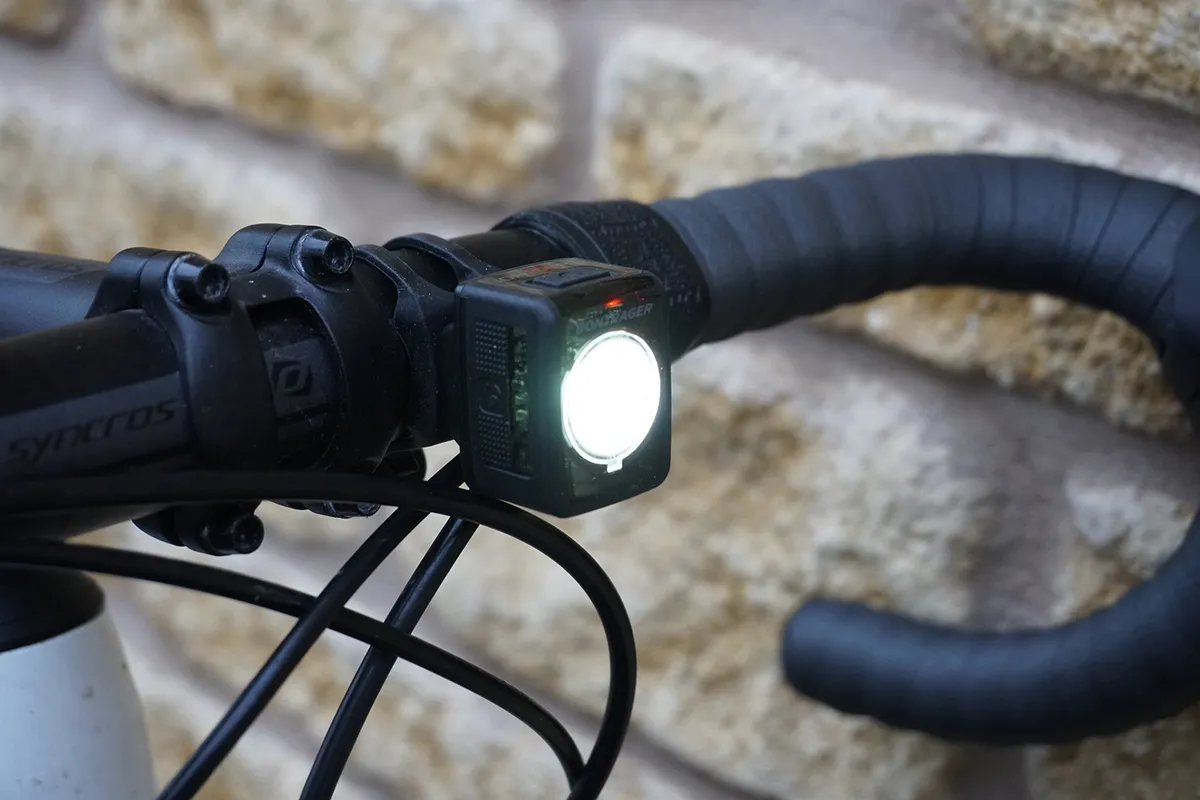
Although it could light the way in a pinch, the Ion 200 front light doesn’t have the power or the beam focus to light the way safely on unlit roads.
However, the Ion 200 RT and Flare RT lights are consummate at what they set out to do.
The Ion 200 RT puts out enough light to draw attention to you on the road, even in bright sunlight. The same goes for the Flare RT rear light.
The nature of the disruptive flash means the light doesn’t need to shine with really high lumen counts.

Some may feel more power equates to more visibility, but this bike light set demonstrates that a lumen bunfight isn’t the be all and end all.
For context, when not testing lights, I use a Lezyne Micro Drive Pro 800XL front unit, which blasts out 800 lumens on its day flash mode. If I were standing in front of the bike with that setting on the go, it would probably make me glance away.
That’s not the case with the Ion 200 RT – it puts out more than enough to attract the attention I need it to without being a potential nuisance for other road users.
The Flare RT rear light also impresses. Again, 90 lumens is outstripped by many lights (the Knog Blinder Road Rear 150 or Lezyne Strip Drive Pro Alert 300 are good examples I’ve tested), but here it’s more than adequate and stops short of glaring anyone.
The cuboid shape protrudes a little from the handlebar and seatpost. For such small units, you might hope for a slightly more stylish side-on aesthetic, but it’s hardly a deal-breaker.
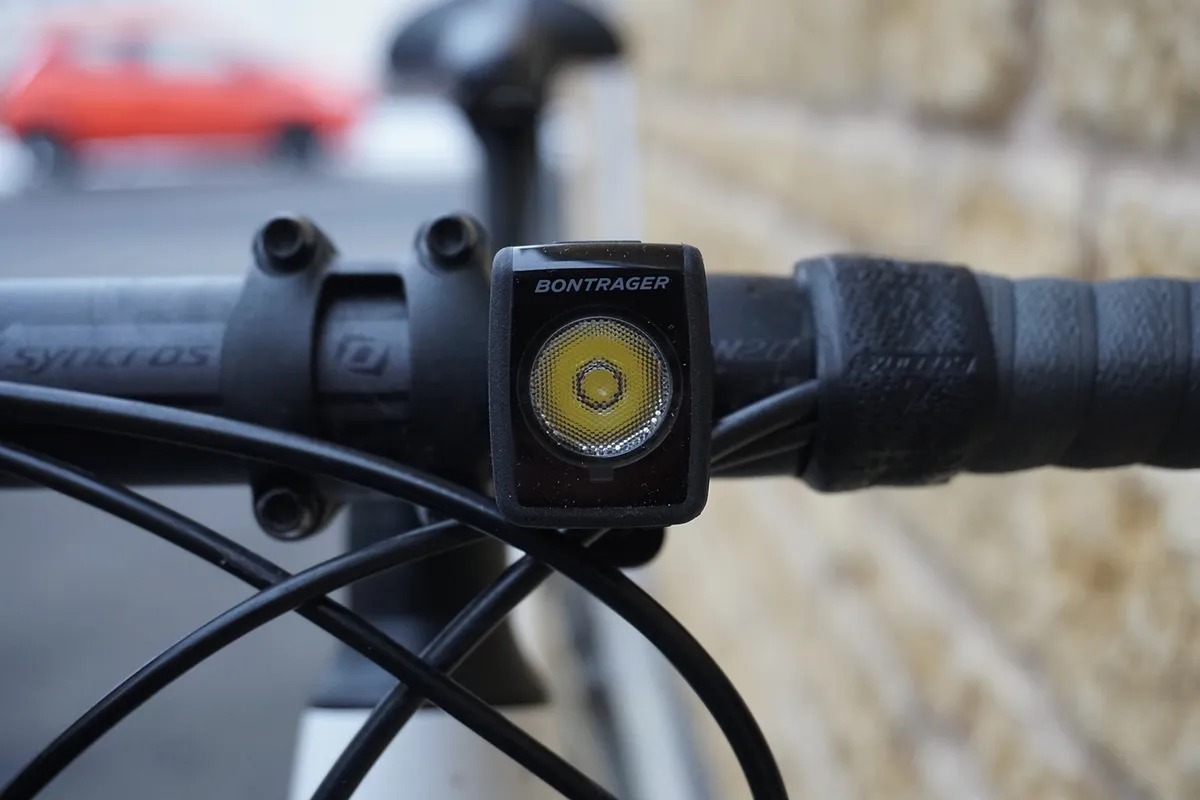
There are more than enough modes, which you can cycle through intuitively using the power buttons. The lights feature memory functions, so you can pick up right where you left off.
Things get a little more interesting when you pair the lights with a head unit. I used my Garmin Edge 830 for this.
They connect via ANT to the Garmin unit by default.
The Garmin connects to the lights via its sensor function, then sets up a separate light network. It automatically registers that the lights should belong to the same network, although you could connect to just one if you wanted.
Control is then possible via the computer. It offers the ability to customise the functions with some pre-programmed settings, or you can choose the ‘individual’ preset.
I found this setting more easily allowed me to select the mode I wanted on the lights.
The pre-programmed settings are fine, but this way you can still control the lights via their power button and/or change the mode manually. You can also lock the lights onto a preferred mode.
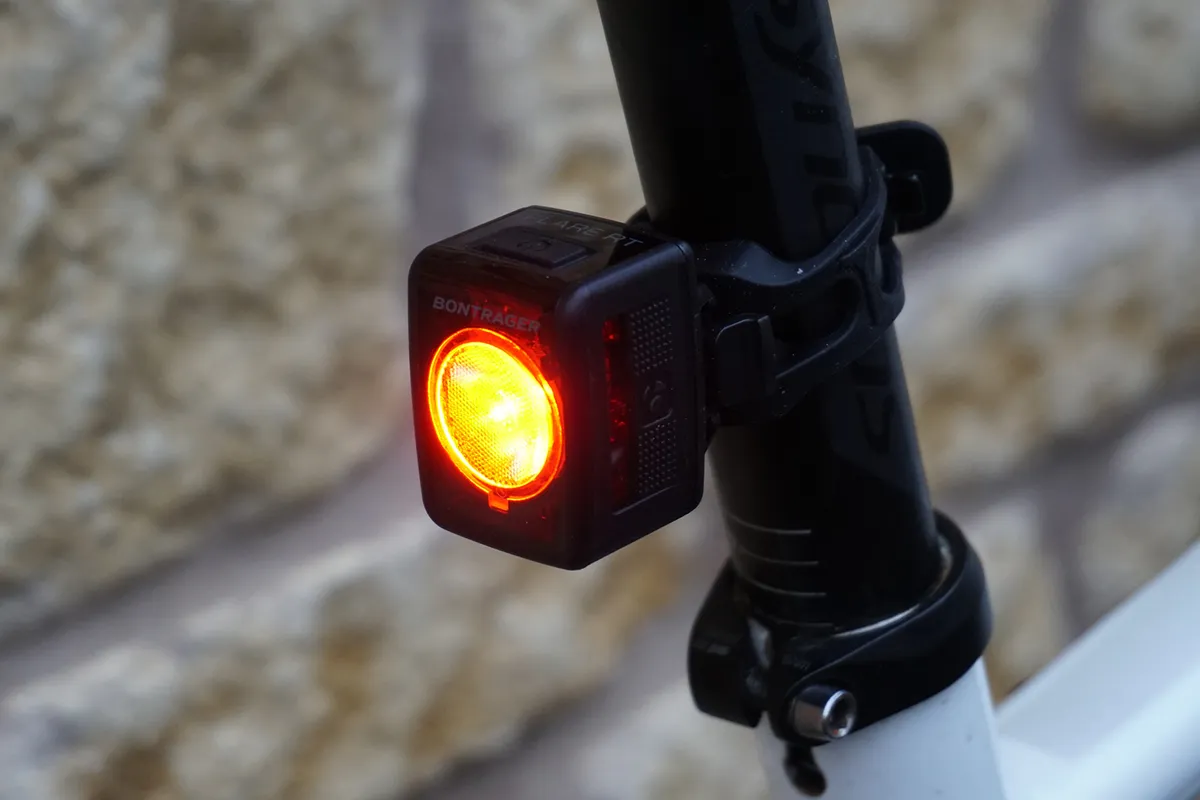
With a little (simple) exploration of the sub-menu system, the lights can be activated automatically by powering the device on, or when you start a ride recording.
I chose the latter and the lights switched on and off flawlessly.
When you pause a ride manually, they keep running. The upside of the individual mode is you can switch them off to save battery life without turning off or sleeping the Garmin.
The ambient light sensors work well. During the day, the lights default to the highest-powered daytime flash mode they can muster (although you can switch this if you want), and at night power down to something less punchy; simple, but intelligent.
Overall, I’ve been impressed by the build quality and construction – the lights feel high quality despite their size.
It’s obvious which mount is supposed to be mounted where and the moulded catch on each of the straps is easy to engage.
The lights clip out of their secure slide-on mountings with the built-in press-to-release lever, when you need to charge them.

You get micro-USB ports here – soon to be a historical artefact in the EU, at least – but although USB-C has its plus points, the use of the older technology is a niggle at worst.
When automatic sensors are concerned, claimed battery burn times become academic as you relinquish control of modes selection to the lights.
However, left on the brightest static mode, the Ion 200 RT front light achieved 1 hour 26 minutes (4 minutes shy of claimed), while the Flare RT rear light served up 4hrs 18mins (12 minutes short of claimed).
Perhaps more pertinently for lights such as these, the punchy day flash modes promise 12 hours (front) and 6 hours (rear) of life.
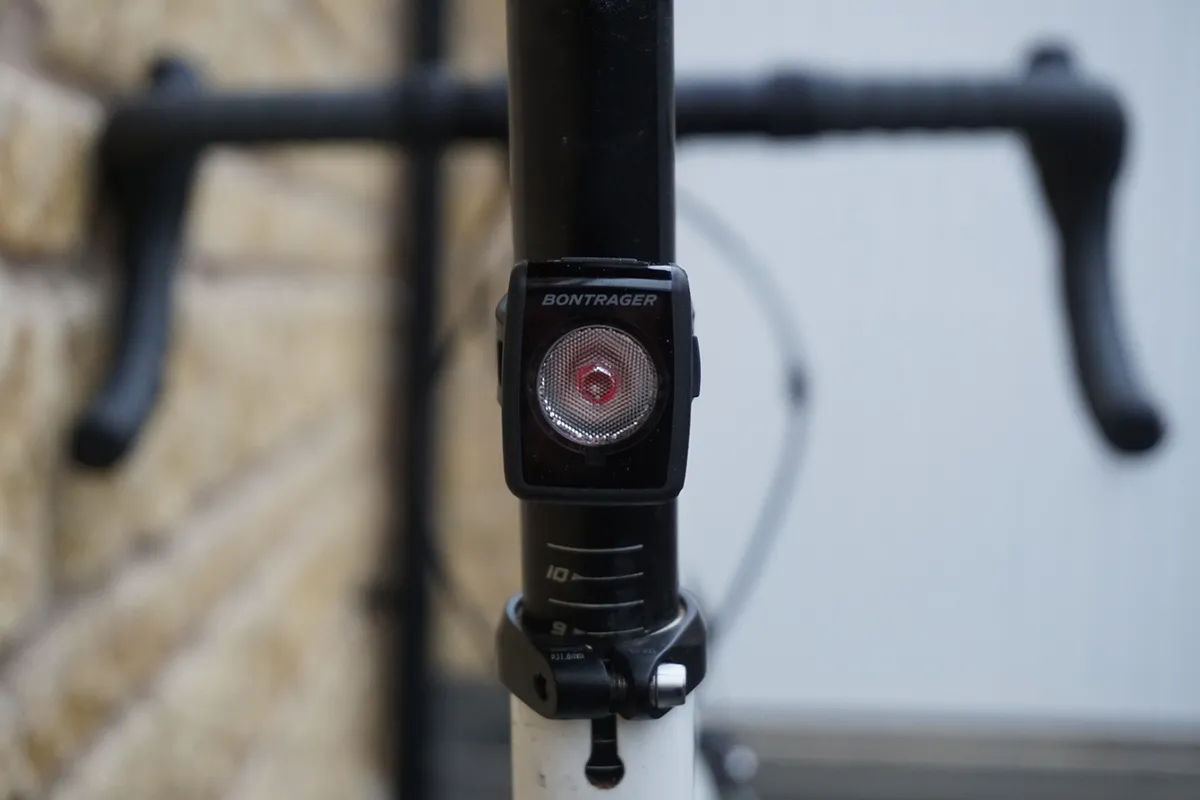
In all cases, at the end of their runtimes the lights switch into a ‘low battery mode’, which extends what dregs of power you have left for around 30 minutes.
As a light set, a penny less than £90 seems a fair asking price for all on offer here. Prices (and tech) have moved forward in the five years since we reviewed this light set’s progenitor.
The Blackburn Dayblazer light set and Guee Sol 800 and Cob X pair arguably offer more front light power for similar money, but neither offer the connectivity or neatness on offer here. You can preserve the latter with one of Trek/Bontrager’s alternative light sets easily enough for a bit more outlay.
Meanwhile, Exposure offers its latest Boost and Boost R light set for £135. This builds upon the highly rated TraceR lights, which are also available as a front/rear pair for around £85.
Bontrager Ion 200 RT / Flare RT bottom line
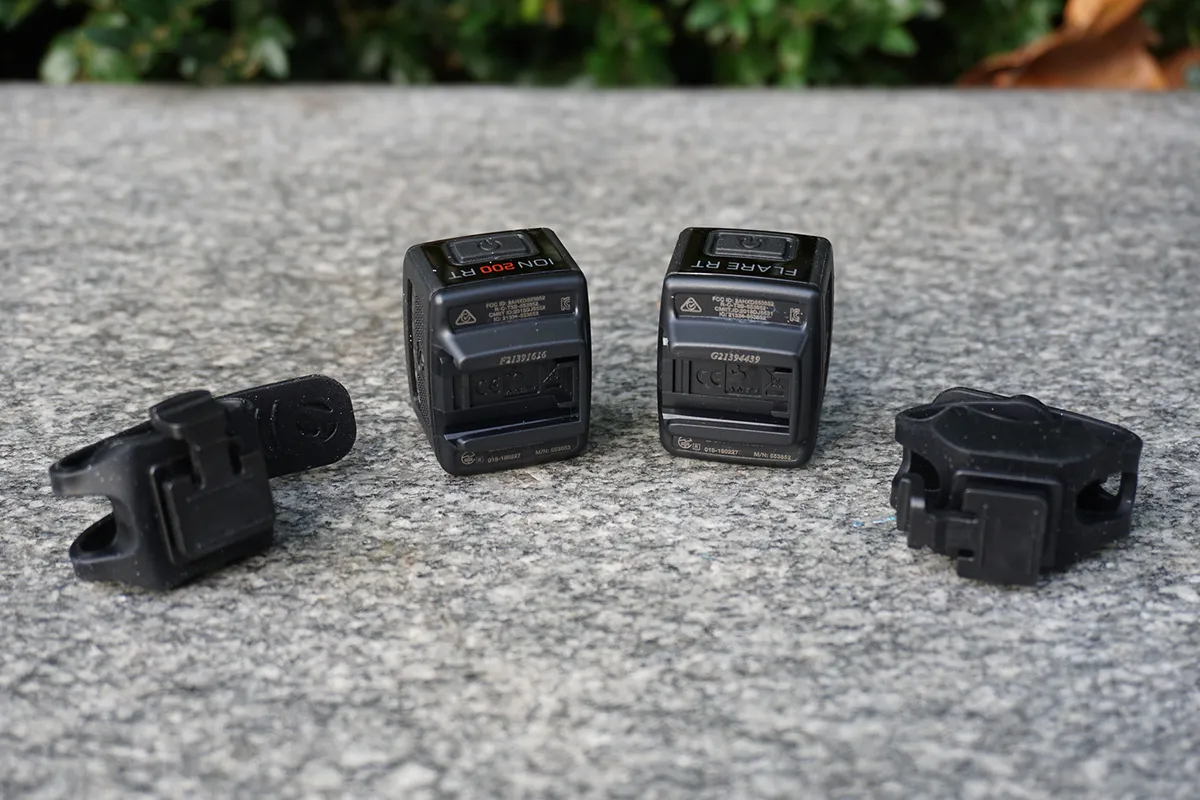
All-in, accepting that these lights are to be seen with rather than to light the way ahead, the Bontrager Ion 200 RT / Flare RT light set is hard to fault.
Some might prefer to opt for a light set (or individual lights) with more raw power, but I’d argue my experience with this set demonstrates it’s probably not necessary.
What faults I can scratch away at can be classed as niggles, and when you throw very good Garmin integration into the mix, there is much to commend here.
Product
| Brand | bontrager |
| Price | 90.00 GBP,120.00 USD |
| Weight | 65.0000, GRAM () - for pair, including clamp |
Features
| br_lightType | front_and_rear |
| br_integratedBattery | yes |
